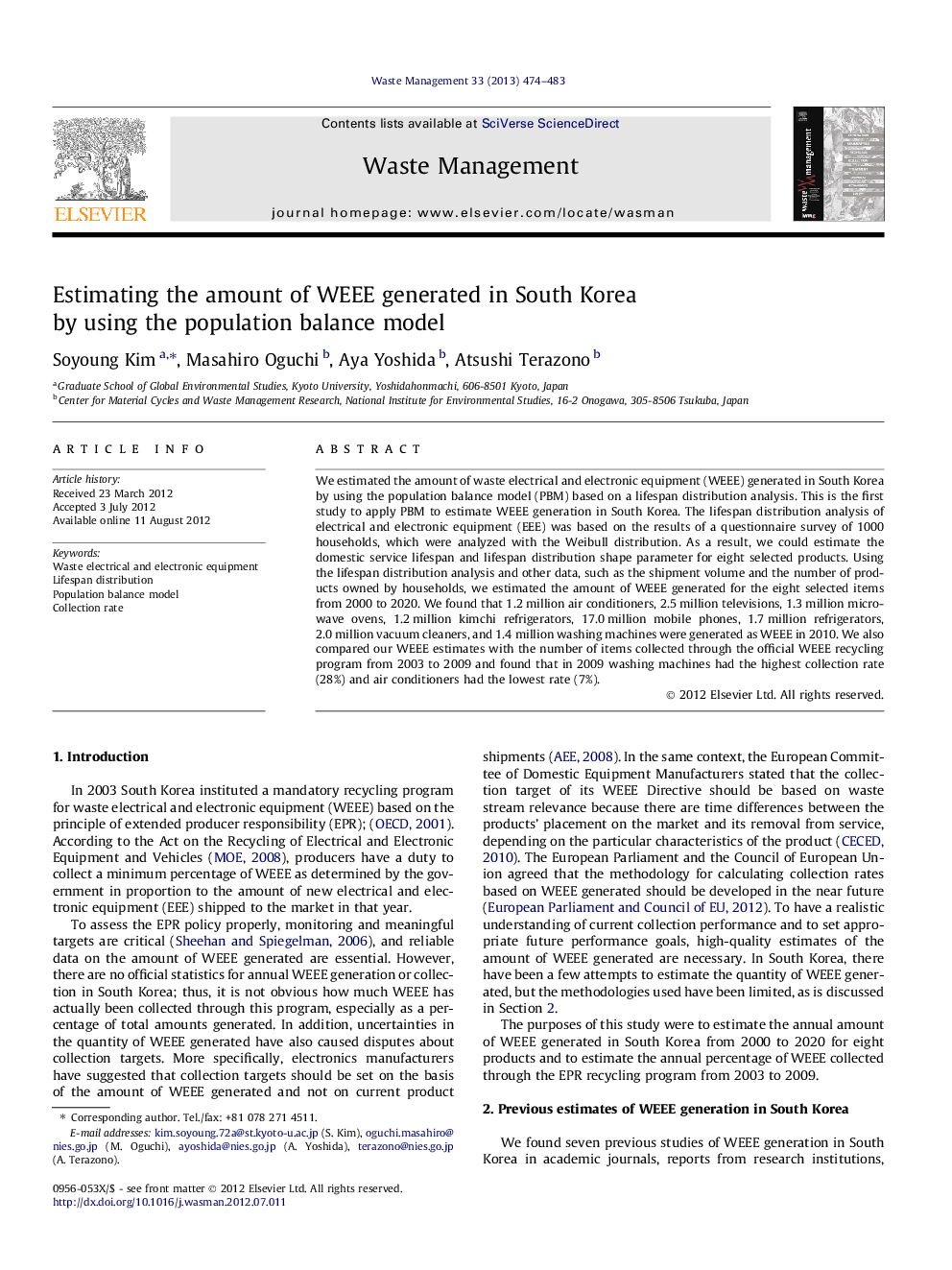| کد مقاله | کد نشریه | سال انتشار | مقاله انگلیسی | نسخه تمام متن |
|---|---|---|---|---|
| 4472088 | 1315056 | 2013 | 10 صفحه PDF | دانلود رایگان |

We estimated the amount of waste electrical and electronic equipment (WEEE) generated in South Korea by using the population balance model (PBM) based on a lifespan distribution analysis. This is the first study to apply PBM to estimate WEEE generation in South Korea. The lifespan distribution analysis of electrical and electronic equipment (EEE) was based on the results of a questionnaire survey of 1000 households, which were analyzed with the Weibull distribution. As a result, we could estimate the domestic service lifespan and lifespan distribution shape parameter for eight selected products. Using the lifespan distribution analysis and other data, such as the shipment volume and the number of products owned by households, we estimated the amount of WEEE generated for the eight selected items from 2000 to 2020. We found that 1.2 million air conditioners, 2.5 million televisions, 1.3 million microwave ovens, 1.2 million kimchi refrigerators, 17.0 million mobile phones, 1.7 million refrigerators, 2.0 million vacuum cleaners, and 1.4 million washing machines were generated as WEEE in 2010. We also compared our WEEE estimates with the number of items collected through the official WEEE recycling program from 2003 to 2009 and found that in 2009 washing machines had the highest collection rate (28%) and air conditioners had the lowest rate (7%).
► We estimated the amount of E-waste in South Korea from 2000 to 2020.
► The population balance model was applied based on a lifespan distribution analysis.
► The result was compared with the number of items collected through recycling program.
► Washing machine had the highest and air conditioners had the lowest collection rate.
► Distribution shape parameter of electronic appliances ranged from 1.49 to 2.43.
Journal: Waste Management - Volume 33, Issue 2, February 2013, Pages 474–483